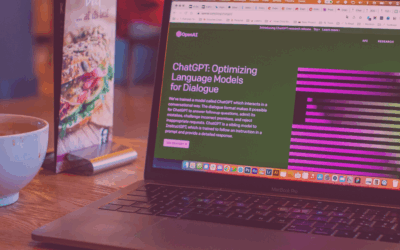A conversational tone is a way of writing or speaking that feels natural and relatable, almost as if you’re having a face-to-face conversation with someone. It’s less formal than traditional business language and more engaging because it sounds like real life. Depending on the content, this can be the easiest way to show your audience you’re relatable and trustworthy.
Using a conversational tone can help you connect with your audience on a personal level, making your message easier to understand and more likely to resonate. Whether you’re chatting with friends or crafting marketing content, a conversational tone helps break down barriers and makes your words more impactful.
Examples of Conversational Tone
Let’s get to the good stuff. Here, we’ve included a few examples of different instances in personal conversations and business communication where you’d use a conversational tone.
In Personal Conversations
Daily Conversations
Think about how you talk to your friends or family. You don’t use fancy words or stiff language; you keep it simple and to the point. For example, instead of saying, “I would appreciate it if you could assist me with this task,” you might say, “Hey, can you help me out with this?”
Text Messaging
Text messages are another great example of conversational tone. You’re brief, direct, and often include some personality. For instance, instead of writing, “I was wondering if you are available to meet this afternoon,” you might text, “Got time to meet this afternoon?”
In Business Communication
Customer Service
Customer service is a prime area where a conversational tone can give you an advantage. It can make customers feel valued and understood. For example, instead of saying, “Your request has been received and is being processed,” a customer service agent might say, “Got it! We’re on it and will get back to you ASAP.”
Marketing Copy
In marketing, a conversational tone can make your brand more approachable. For example, instead of saying, “Our product offers numerous advantages,” you might say, “You’re going to love how much easier this makes your life.” This type of language feels more like a friend giving advice rather than a company making a sales pitch.
Guidelines for Using Conversational Tone
Tailoring Tone to Audience
Not all audiences are the same, so it’s important to adjust your tone depending on who you’re speaking to. If you’re writing to a professional audience, your conversational tone might be a bit more polished. But if you’re speaking to younger consumers, you might be more casual and playful. The key is to know your audience and speak their language.
Balancing Professionalism and Friendliness
While a conversational tone is friendly, it’s still important to maintain professionalism, especially in business settings. You want to come across as approachable but not too casual. For instance, “Hey there! Let’s chat about your account” is friendly but still professional, while “Yo! What’s up with your account?” might be too informal.
Benefits of Conversational Tone
Building Trust and Rapport
A conversational tone helps build trust and rapport with your audience. When you communicate in a way that feels genuine and relatable, people are more likely to trust you. It shows that you’re not just a faceless entity but a real person who understands their needs.
Enhancing Engagement and Connection
People are more likely to engage with content that feels personal. A conversational tone draws readers in and makes them feel like they’re part of a conversation rather than just being talked at. This can lead to higher engagement rates, whether it’s more comments on a blog post or better responses to an email campaign.
Conclusion
A conversational tone is key to making your communication more effective, whether you’re talking to friends, customers, or colleagues. It’s all about being clear, relatable, and engaging.
Don’t be afraid to incorporate a conversational tone into your writing and speaking. It can make your messages more impactful and help you build stronger connections with your audience.



